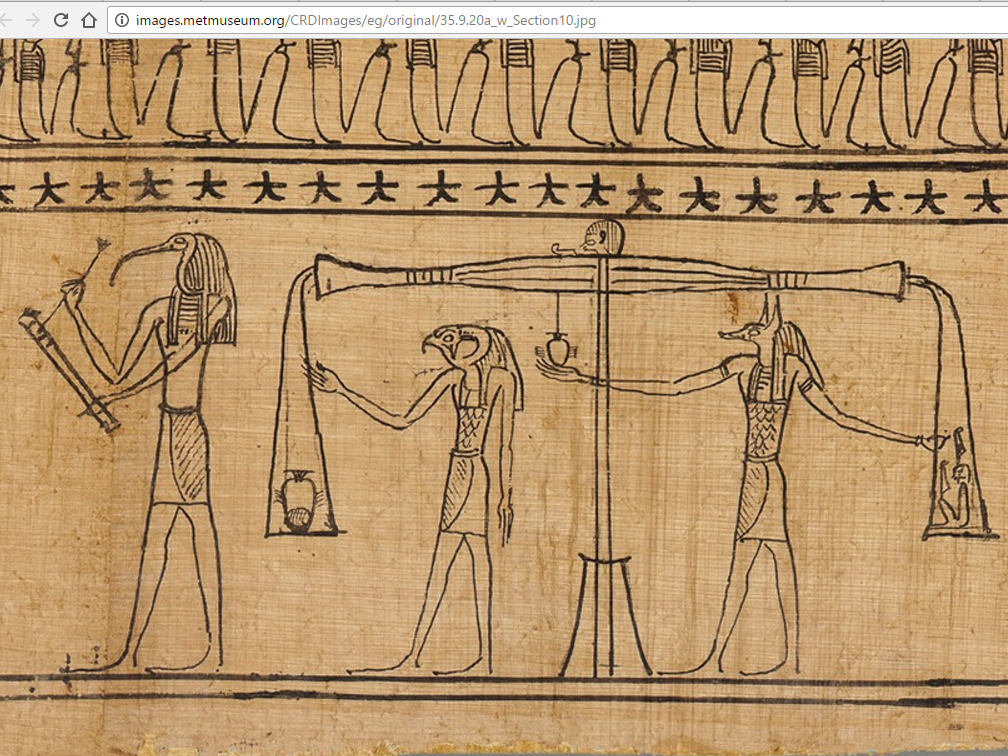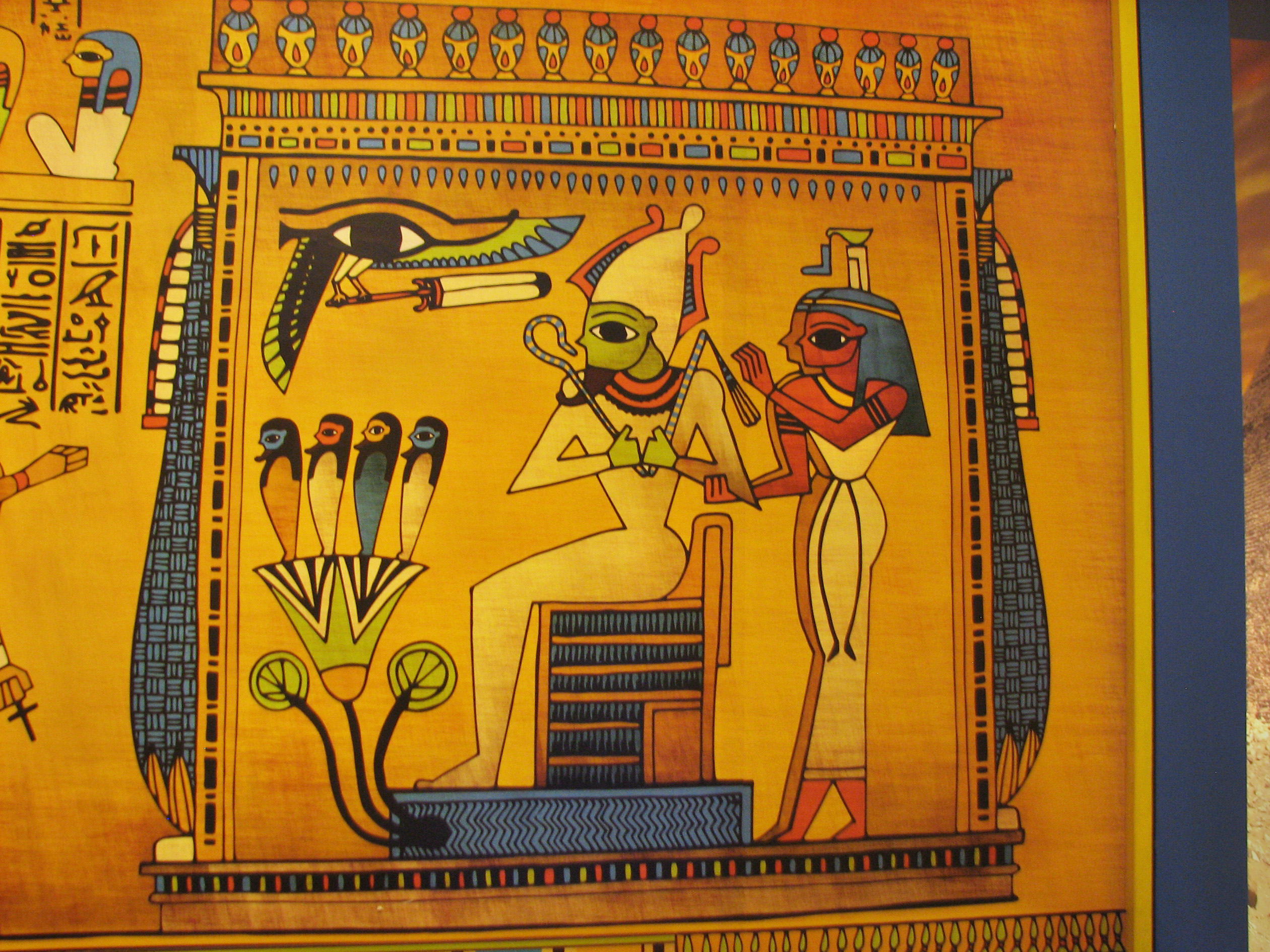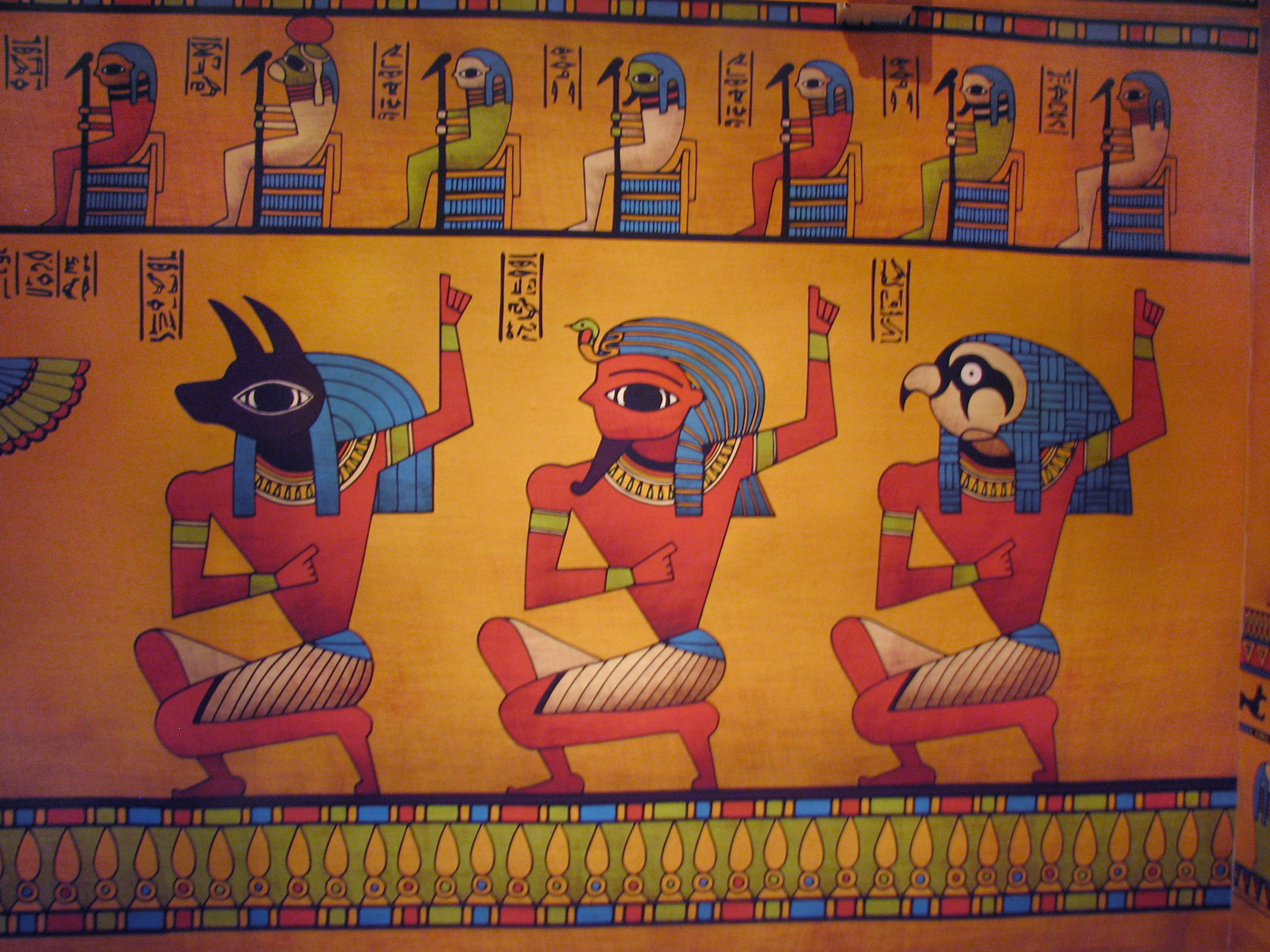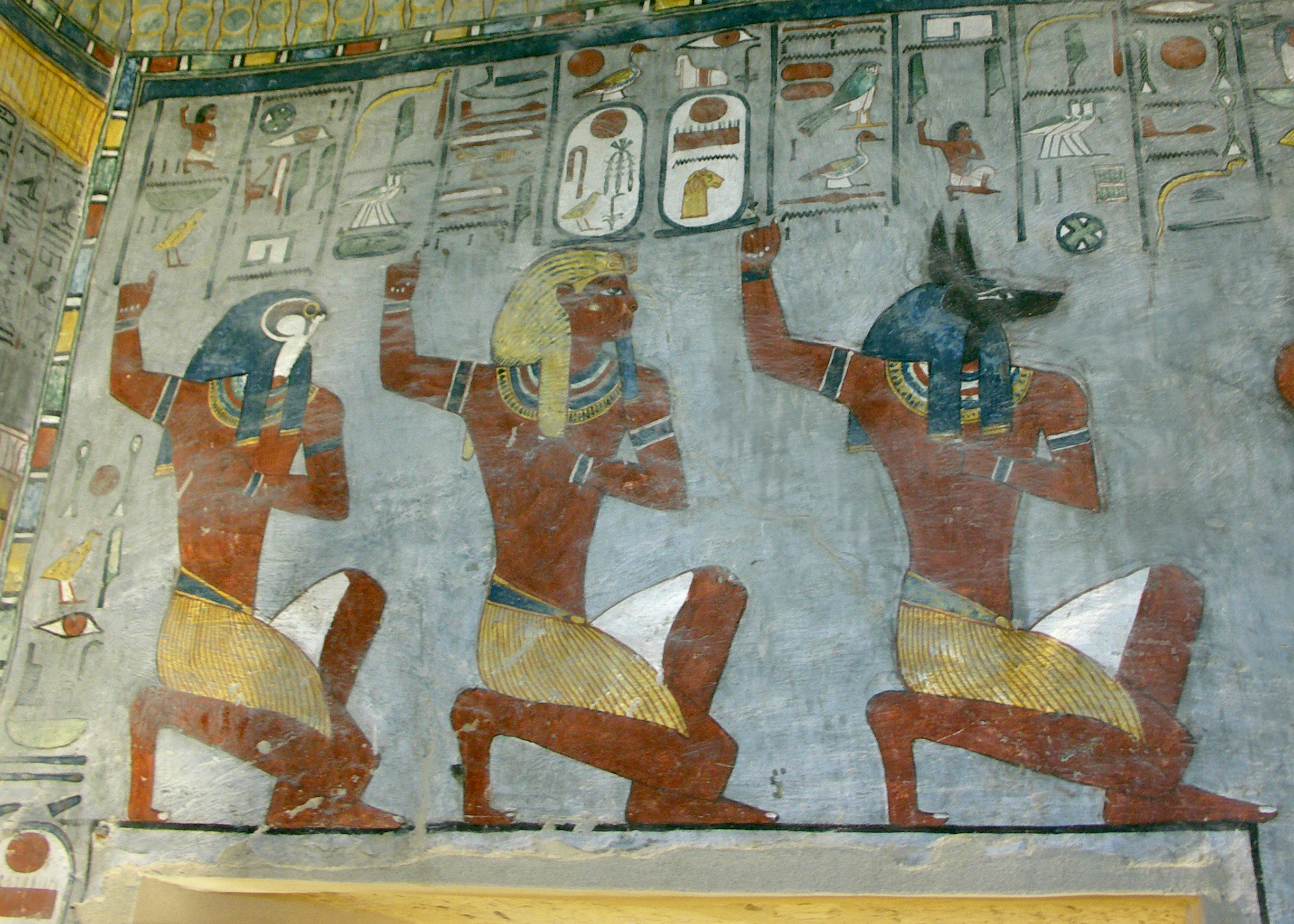
Sunday, February 5, 2017
Egyptian Murals at San Diego's Museum of Man
8:29am

This is from the weighing of the heart scene. The newly dead person's heart is being weighed against the feather of Ma'at. It must not be heavier then this feather!
Imhotep (Imuthes), Priest of Horus, has a similar scene in his Book of the Dead now at the Met Museum:

Screen capture from this museum photo
Book of the Dead of the Priest of Horus, Imhotep (Imuthes)
Early Ptolemaic Period, ca. 332–200 B.C.E.
Accession Number: Met Museum #35.9.20a–w
In both of these scenes, Thoth (Djehuty) can be seen recording the successful results of the weighing.
The results are announced to Osiris, which appears next in both the mural and the ancient papyrus:

This is Osiris (aka Wesir) on his throne.
The mural was loosely based on similar scenes in the Book of the Dead, such as this one at Chicago's Oriental Museum:

Ptolemaic Period, ca. 332-30 BCE Gift of Mrs. Elizabeth Milbank Anderson, 1919, OIM 10486 Photo ©Joan Ann Lansberry, 2010 |
Further along, after undergoing all the trials, the deceased person's soul is rejuvenated and there is rejoicing:

Pharaoh with the souls of Nekhen.
Here's a similar scene in the tomb of Ramesses I:
 Photo courtesy William Petty
See "Soul of Nekhen, 12th Dynasty" at Met museum
|
"In this scene [above], which celebrates the rejuvenation of the king's ba (*G53) or soul, the written henu hieroglyph is visible in the inscription above the figure next to the king and is clearly mirrored in the larger figures of the representation. The figures are, in fact, simply hieroglyphs made large. In a similar representation from the Eighteenth Dynasty temple at Buhen in Nubia, the falcon-headed gods of Pe are accompanied by an inscription which states 'May they give all life and power...(and) all stability which they have...,' showing that the gesturing figures could sometimes be symbolic of divine gifts." (Wilkinson, _Reading Egyptian Art_, page 17)